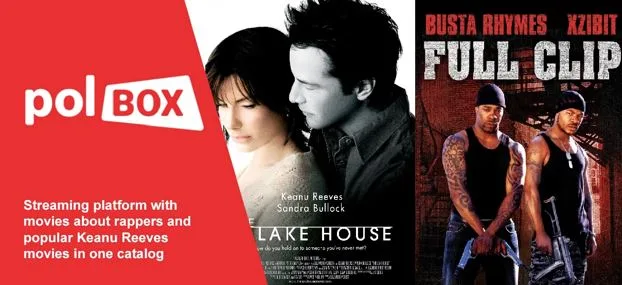The Secret to Building a Scalable Prospecting Strategy That Actually Converts
In today’s hyper-competitive B2B landscape, sales prospecting has evolved from cold calls and generic email blasts into a precise, data-driven process. Yet even with all the tools available, CRMs, email automation, AI, the biggest challenge remains: how do you build a prospecting strategy that not only scales, but actually converts?
Too many companies focus solely on volume, pushing out thousands of emails or calls, hoping that something sticks. But if you’re not converting at a sustainable rate, you’re not scaling, you’re just spinning your wheels.
Instead of cold lists and outdated contact info, modern sales teams are leveraging AI-driven platforms like Fundz to discover and prioritize high-converting leads based on real-time intent signals.
Let’s unpack the key components of a prospecting strategy that is both scalable and effective at closing deals.
- Understand Your Ideal Customer Profile (ICP) at a Deeper Level
Most companies define their ICP too broadly. “Tech companies with 50-500 employees” is a demographic filter, not a real ICP.
To scale your prospecting effectively, go deeper. Define your ICP using a combination of firmographic, technographic, and behavioral data. Here’s what to consider:
- Firmographics: Industry, company size, funding stage, geography
- Technographics: Tools they use (e.g., CRM, marketing platforms, analytics)
- Intent signals: Are they actively searching for a solution like yours?
- Job titles and roles: Who are the decision-makers, influencers, and users?
When you know exactly who you’re targeting, your messaging becomes laser-focused. Your reps don’t waste time on poor-fit leads. And most importantly, personalization at scale becomes achievable.
- Build a Data Engine, Not Just a List
Most sales teams start with a list. Great teams build a data engine.
A data engine is a repeatable system for sourcing, enriching, and validating lead data. This is crucial for scaling because you can’t rely on static lists or outdated databases. You need:
- Lead sourcing tools: Tools like Apollo, LinkedIn Sales Navigator, and ZoomInfo to discover new contacts.
- Data enrichment: Use Clearbit, Lusha, or Clay to enrich records with up-to-date info.
- CRM hygiene: Automate data validation so your CRM stays clean, no duplicates, no bounced emails, no outdated titles.
You want to build pipelines, not one-time campaigns. That means your data strategy should be dynamic and always feeding new, relevant leads into your funnel.
- Prioritize Quality Outreach Over Quantity Spam
Scaling doesn’t mean blasting 1,000 emails a day. It means sending 100 that actually get read.
To convert at scale, shift your focus to relevance. Here’s how:
- Segment your audience: Tailor messages to specific industries, job functions, or pain points.
- Use micro-personalization: Reference a recent funding round, a mutual connection, or a piece of content they shared.
- Focus on value, not product: Your first touch shouldn’t be a pitch. It should solve a problem, educate, or spark curiosity.
Use email sequences, but don’t just automate junk. The best sequences feel hand-written, even when they’re not. That’s what makes scalable personalization work.
- Adopt a Multichannel Approach (Your Prospects Do)
The average B2B buyer touches 5-7 channels before making a decision. If you’re only prospecting through email, you’re missing out.
To convert more leads, your outreach strategy should include:
- Cold emails (personalized and sequence-driven)
- LinkedIn touches (connection requests, likes, comments, DMs)
- Cold calls (especially for mid-market/enterprise)
- Retargeting ads (via platforms like Meta, Google, or LinkedIn)
- Content distribution (case studies, playbooks, webinars)
Multichannel doesn’t mean doing everything at once, it means having a coordinated system where your brand shows up consistently across the buyer’s journey.
- Test, Measure, and Iterate Relentlessly
The best sales teams treat prospecting like a science. They don’t rely on gut feelings or old scripts. They A/B test everything, from subject lines to CTAs to time of day.
Metrics to track:
- Open rate: Are your subject lines resonating?
- Reply rate: Is your messaging prompting engagement?
- Positive response rate: Are you starting real conversations?
- Conversion to meeting: Is your CTA clear and compelling?
- Meeting-to-opportunity rate: Are you qualifying effectively?
Every week, analyze performance, double down on what’s working, and retire what’s not. This is how your strategy stays agile and scalable.
- Equip Reps with the Right Enablement Tools
Even the best strategy will fail if your reps don’t have the tools and training to execute.
Invest in a prospecting playbook that outlines:
- ICP definitions
- Messaging templates and frameworks
- Call scripts
- Objection handling guides
- Qualification criteria
Pair this with enablement tools like:
- Sales engagement platforms (e.g., Outreach, Salesloft)
- Conversation intelligence (e.g., Gong, Chorus)
- AI copilot tools (e.g., ChatGPT or custom assistants for email writing and research)
Scalable prospecting is about empowering reps, not replacing them. The right tools turn average reps into top performers.
- Align Sales and Marketing Around Pipeline
In many companies, sales and marketing operate in silos. But to scale prospecting, both teams need to be aligned around pipeline goals.
This means:
- Marketing should deliver sales-ready leads, not just MQLs.
- Sales should give feedback on lead quality, so targeting improves.
- Both teams should collaborate on messaging, especially around pain points and value props.
When sales and marketing are aligned, the whole funnel becomes more efficient. And conversion rates go up, dramatically.
- Don’t Automate What You Haven’t Proven Manually
Before you scale any part of your prospecting, email sequences, LinkedIn messaging, calling scripts, validate it manually.
Too many teams automate bad messaging and then wonder why it doesn’t convert.
Instead:
- Test your approach with 20-50 leads manually.
- Track results: replies, objections, conversions.
- Iterate based on real conversations.
- Only then should you scale it up through automation.
This prevents you from wasting time and burning out your TAM (total addressable market).
Final Thoughts: Scale with Purpose, Not Just Speed
A scalable prospecting strategy is not just about doing more, it’s about doing better at scale. When you truly understand your ICP, craft relevant messaging, and optimize every part of the process with real feedback, your prospecting becomes a growth engine, not a guessing game.
Most importantly, remember this:
It’s not about how many leads you touch, it’s about how many conversations you start. Even the Dallas Mavericks don’t win games by rushing every play, they play strategically, pivot when needed, and know when to pass. Your prospecting strategy should do the same.
Focus on connecting, not spamming. Build systems, not silos. And never stop improving.
That’s the real secret to building a scalable prospecting strategy that actually converts.





